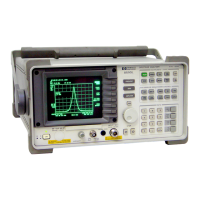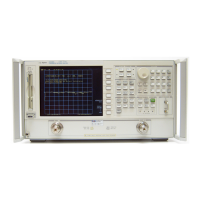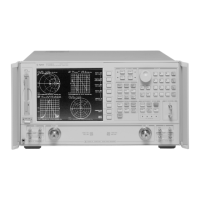Tunable Lasers How to Perform a Wavelength Sweep
112 Agilent 8163A Lightwave Multimeter, Agilent 8164A Lightwave Measurement
System, & Agilent 8166A Lightwave Multichannel System, Fourth Edition
How to Change the Output Wavelength
5 Move to [λ] and press Enter. [λ] is the output wavelength, λ, in the equation
above.
6 Enter 1570 and press Enter.
NOTE Note how the frequency offset, [
∆f], changes as you change the value of [λ].
How to Set the Base Wavelength
NOTE You cannot set <λ0>, the base wavelength directly.
7 Press [λ->λ0] to set <λ0> to 1570 nm. <λ0> represents the base wavelength,
λ
0
, in the equation above.
NOTE Note how the frequency offset, [
∆f], changes to zero when you press
[λ->λ0].
How to Change the Frequency Offset
8 Move to [∆f] and press Enter. [∆f] represents the frequency offset, df, in the
equation above.
9 Enter 1.000 and press Enter. The frequency offset, [
∆f], changes to 1.000 THz.
NOTE Note how the output wavelength, [λ], changes as you change the value of [
∆f].
How to Perform a Wavelength
Sweep
What is a Wavelength Sweep ?
A wavelength sweep is performed when the instrument changes the optical
wavelength of the optical output across a user-defined wavelength range. You can
use a wavelength sweep to measure the wavelength-dependent loss of an optical
component.

